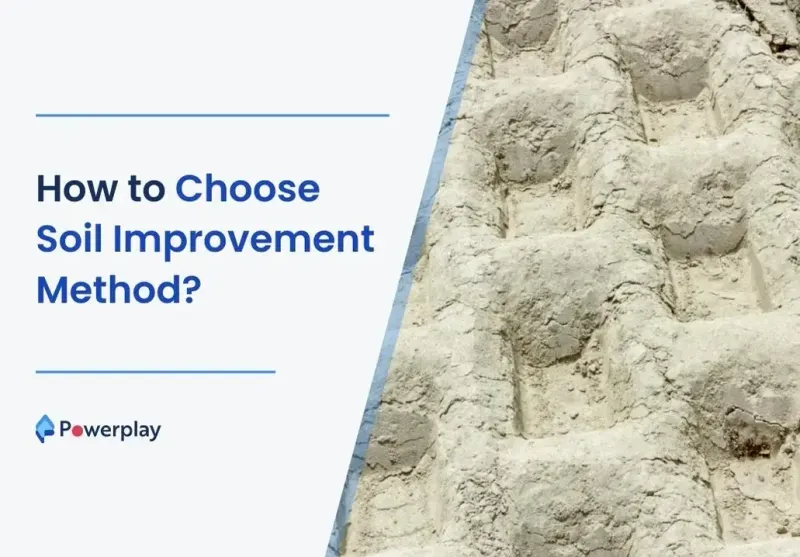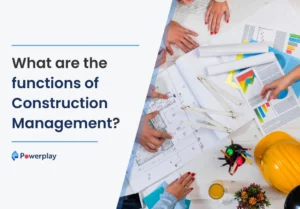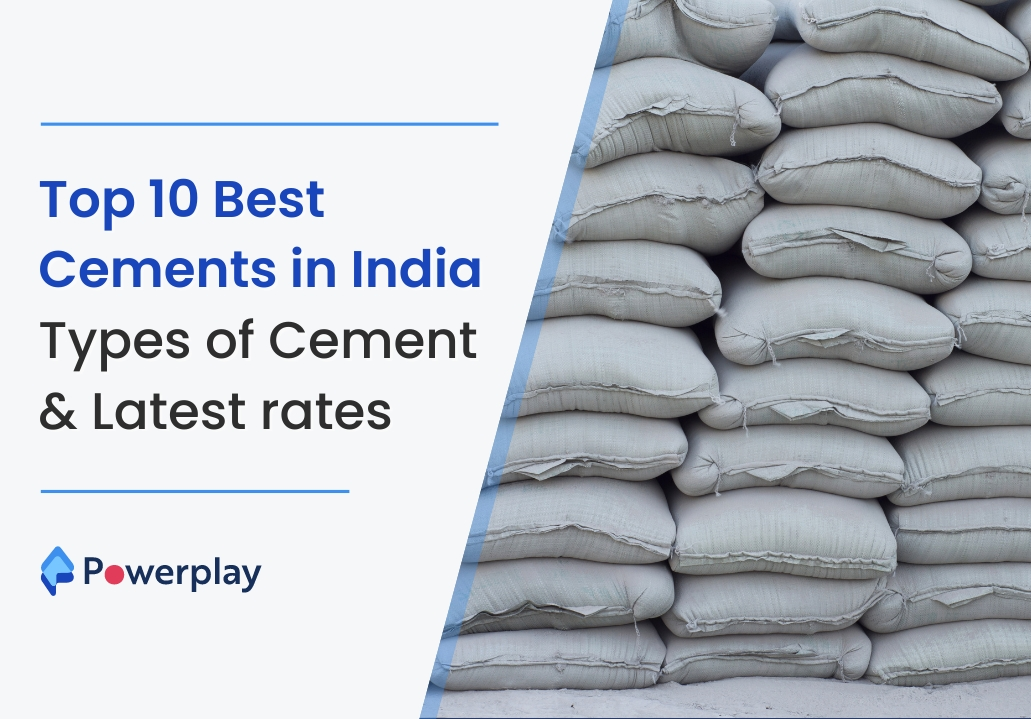How to Choose Soil Improvement Method?
-
Kumar Abhishek Anand
- October 12, 2023

At the beginning of a construction project, the ground needs to be evaluated and, if necessary, improved to develop the bearing capacity needed to support the project structure. Without proper soil improvement techniques, the underlying soil below the foundation may not be able to support the final structure.
Soil improvement techniques are often used before construction begins. These methods are chosen based on a variety of factors, the most important of which is the type of soil on which the structure is built. Other factors include equipment availability and type, construction budget, available time, previous experience, and workforce skill level.
Sometimes soil improvement activities also need to be executed after a long period when the bearing soil below the structure fails due to any unwanted or unforeseen circumstances. The same soil improvement techniques can also be used in these cases with a few modifications to support the structure while the soil is being strengthened.
The cost and suitability of the soil improvement process used depend primarily on the type of soil. Therefore, the choice of optimal soil improvement technique should be based on both soil and structural conditions.
Table of Contents
ToggleSoil Improvement methods based on Soil Types
Here are the different soil improvement techniques that can be employed based on soil type:
I- Soil Replacement

Soil replacement methods are used in soft soil conditions and can be mainly classified into two types – soil removal and replacement method, and soil displacement method.
Soil removal and replacement techniques are usually best suited for soft or weak soil types where the soil layer is close to the surface and needs to be above the groundwater table and also, its depth should not exceed 9 meters. If the soft soil layer is not close to the surface, groundwater needs to be lowered by mechanical means, which should also be economical.
This technique typically removes weak soil in the first step and replaces the soil removed in the second step with a structural filling once the grading work is complete. On the other hand, in the second method, the soil displacement is caused by the heavier embankment, which overloads the soft soil layer and shears it.
II – Water Removal
Water removal soil improvement technique can be employed for construction sites that have an underlying compressive soil layer with a high value of cohesion index. Water removal techniques can be achieved through four different methods to improve the strength of the soil.
01 – Trenching Technique
To facilitate drainage in the field, trench technology can be used to remove water from underneath the structure. This technique is best suited for sites with soft, fine-grained soil with hydraulic filling and depths less than 3 m. The distance between the trenches causes the rapid outflow of water from the soil layer.
Drilling techniques improve the soil strength of the site by removing water from the soil layer above weak and soft soil. Ultimately, this reduces all types of settlement due to structural loading.
02 – Preloading Technique
Before initiating the construction activities, sites having fine-grained soils, organic soils, and fills need to be consolidated with external loads. This type of soil improvement method helps to achieve sufficient consolidation but requires a long period.
03 – Vertical Drain Preloading
This method is also employed before starting construction activities where the soil layer is consolidated with the help of loads but is also combined with vertical drains which facilitate and accelerate the consolidation process. This type of soil improvement technique is used for fine-grained soils, organic soils and fills, and for depths less than 30m.
04 – Electro Osmosis
Electro osmosis is a soil improvement method that is utilized for sites having consolidated clay and silty clay in a bounded and small area. This is a rapid soil improvement technique but is quite expensive and not suitable for conductive soil layers.
III – Site Strengthening
There are four site strengthening soil improvement techniques that can be used as per suitability and other factors such as cost, experience, availability of equipment, etc. The four site strengthening techniques are:
01 – Dynamic Compaction

In this soil improvement technique, weak soil is compressed and compressed by the dynamic action caused by the impact of high energy. This is a fairly inexpensive method and requires dropping static weights in the range of 15-40 tonnes at a height of 10-30 meters. This is the best soil improvement method for soils with low cohesion and a high percentage of fine powder.
In addition, dynamic compression is not preferred where the depth is greater than 18 m or where there is non-adhesive soil beneath the water table, as the process can affect adjacent structures.
02 – Vibro-Compaction

Vibro compaction is a soil improvement technique that is generally used for sites having cohesionless soil having a maximum of 20% fines. This method is used for depths of not more than 30 meters.
03 – Vibro-Replacement

Unlike Vibro-compaction, the Vibro-replacement technique is best suited for cohesive soils but is quite expensive.
This method involves the usage of jetting and vibration to dig into the soil layer, remove the soil, create holes and replace the dug soil with compacted granular fill into the holes. These granular fills act as columns for the proposed structure.
04 – Vibro-Displacement

Vibro-displacement soil improvement technique is used for cohesive soil which is stiffer than average. This method generally involves jetting and vibration to dig holes by removing the soil and filling the holes with pre-compacted granular fills in the form of columns.
IV – Grouting
Grouting is a common soil improvement technique that involves injecting grouts into the soil layers to fill in the underground voids, fractures, and joints to increase the bearing capacity of the soil.
Grouting can be mainly carried out in two ways:
01 – Injection Grouting
Injection grouting is suitable for a wide variety of coarse and fine-grained soils. In this method, finer grain soils need to be grouted using expansive grouts and the overall grouting process subsequently reduces the porosity of the soil structure.
02 – Deep Grouting and Mixing

Deep grouting and mixing use jetting process and augers to mix the soil with grouts. This method is also suitable for a wide variety of coarse and fine-grained soils and depths up to 52 meters.
V – Thermal Improvement
Thermal improvement for soils is done in two ways, heating and freezing. The heating method is used for cohesive soils and develops irreversible strength in the soil structure but is also practically restricted due to high energy demand.
The freezing method is used for soil layers lying below the groundwater level or cohesive soils above the groundwater level and increases the bearing capacity of the soil by reducing porosity. For tunneling and excavation projects, freezing is generally preferred to minimize or stop the groundwater inflow.
VI – Geosynthetics
The use of geosynthetics is one of the best and cheap forms of soil improvement techniques that can be used to control erosion, like filters, in drains, as a water barrier, and also as reinforcement in soil.
Share
Kumar is a digital content professional with more than 2 years of experience in Blog writing, copywriting and scripting. His passion lies in the art of creating convincing content that plays a major role in converting leads for SAAS businesses.












